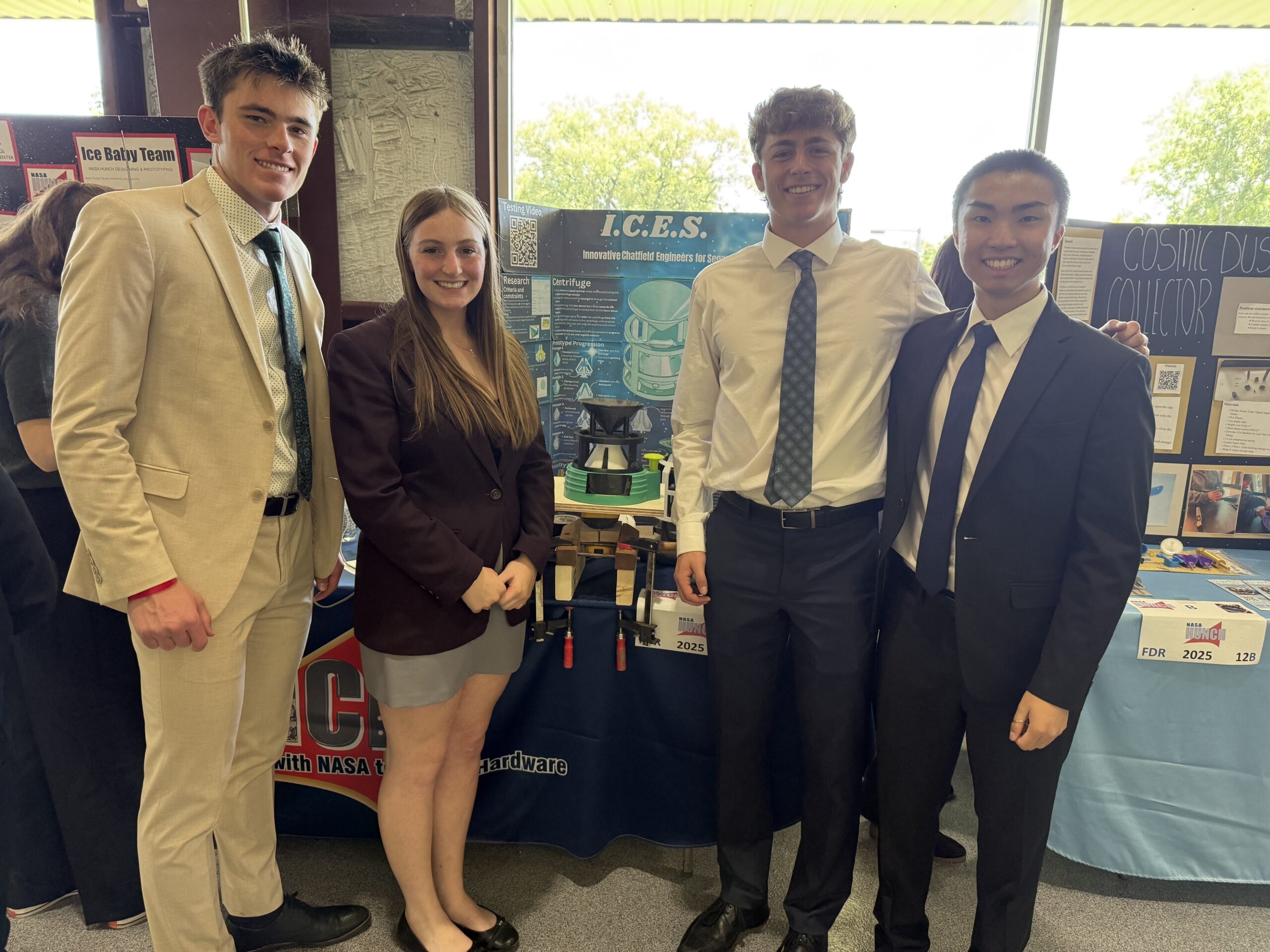NASA HUNCH Program

In April, Teaching Fellow Dawson Lang and 23 of his students traveled to Houston to present their engineering projects at NASA’s Johnson Space Center as part of the NASA HUNCH program. HUNCH—High School Students United with NASA to Create Hardware—offers high school students the opportunity to design and prototype solutions to real challenges faced by NASA.
Lang’s students presented projects ranging from a lunar ejecting robot to a modular lunar lab and landing legs, gaining invaluable feedback from NASA engineers. In addition to presenting, they toured NASA facilities and saw firsthand how their ideas could play a role in future missions.
We spoke with Dawson to learn more about how his students got involved, what they’re working on, and the impact of the program.
1. How did you hear about this program/ how did you get your students involved?
I first heard about the NASA HUNCH program when I was hired at Chatfield Senior High School. I replaced a retiring teacher who taught physics and engineering. With my engineering and physics educational background, the opportunity to teach these courses excited me, and I want to connect my students with real-world aerospace challenges. Luckily, all the work of getting my students involved was already completed by the time I got my position from the teacher before me.
2. What is the selection process like?
The selection process involved students competing in Design Reviews, where they showcase their engineering projects to NASA engineers. Several teams submitted projects for the Design and Prototyping section. After review, 23 students were selected to present their projects in Houston.
3. What are your students working on hardware and soft goods with NASA?
Our students are working on several projects: a lunar ejecting robot, a lunar camper/lab, and lunar landing legs. (Here is a list of all the different projects.) These projects align with NASA’s needs for the International Space Station or future lunar and Martian missions.
4. How involved with the students’ projects are you?
I teach Engineering 1, where I teach the students SolidWorks and the design process with the Engineering Grand Challenges. We have another teacher at our school who teaches our Engineering 2 and 3 courses, where the students learn about robotics, renewable energies through NREL, and investigate different types of engineering. Students submit their NASA Hunch projects in our Engineering 2 and 3 courses. Throughout the engineering track, we support them by helping them refine their ideas and 3D print designs and ensure they meet NASA’s specifications.
5. Please share anything about this program and your students’ projects.
NASA HUNCH has been an incredible opportunity for my students, giving them hands-on experience with engineering challenges with real-world applications in space. The program enhances their technical skills and builds confidence, teamwork, and problem-solving abilities. Seeing their work contribute to actual NASA missions is inspiring, and I’m proud of how they’ve risen to the challenge.